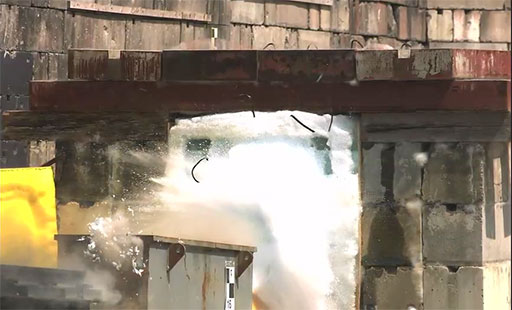1.7 Penetrators at work
In collaboration with Astrium UK and the Mullard Space Science Laboratory (in London), the instruments housed in penetrators have undergone a series of impact tests into compact sand and ice targets to simulate conditions on places such as the Moon and Europa.
Even after a penetrator was fired at just under the speed of sound, the structure and instruments inside remained intact after the impact, proving the technology to get functioning instruments to the surface of another body in this way. They are much less heavy than conventional landing systems, so more can be achieved for the same mass. This concept will be developed in the next few years, when power and communication systems will also be researched.
This video has no sound

